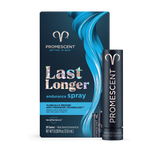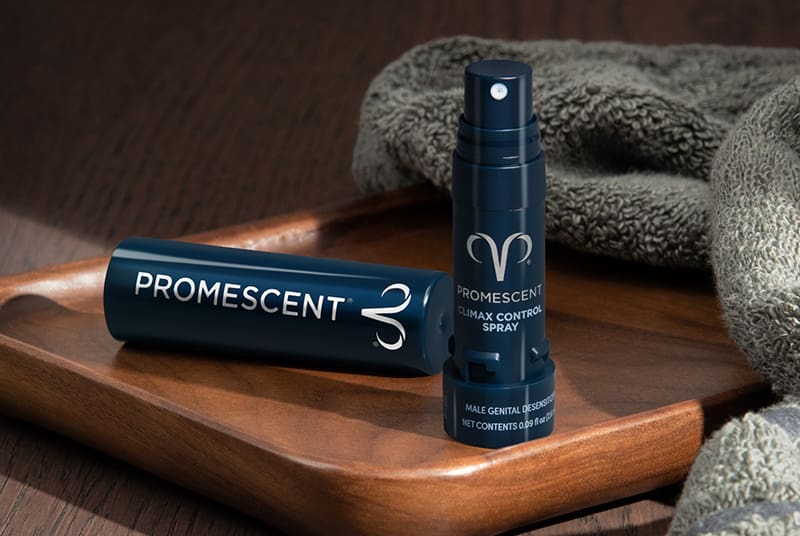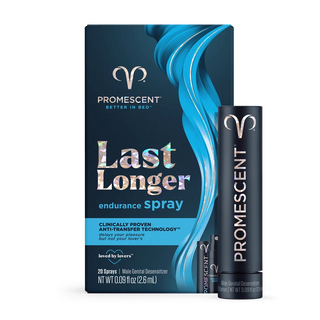You may be familiar with Tramadol as a pain reliever, but it is also sometimes used to treat premature ejaculation. We’ll take a closer look at why and how it works.

reviews


reviews

Are you dealing with premature ejaculation?
Unfortunately, reaching climax too early can be a frustrating problem for a great number of men.
While a number of over-the-counter options exist, certain medications are used off-label to treat premature ejaculation.
Tramadol, usually prescribed for pain, is one such medication that has been shown to help slow down ejaculation times in men.
However, Tramadol can come along with certain side effects and may not be the best option for every man.
Below is a closer look at everything you need to know about using Tramadol for premature ejaculation and alternatives to some of the safer and potentially more effective treatment options.
Yes, in fact, studies show that men experienced a gain of almost three minutes.
Ultimately, that will have to be determined by your doctor, but typically the dosage is 100 mg.
Tramadol is an opioid, so it does come with some potentially serious risks and side effects. We discuss them in further detail later in the article.
Yes, there are several alternatives to using Tramadol to treat premature ejaculation, like desensitizing sprays and delay wipes. Even certain exercises and techniques can help with premature ejaculation.

Tramadol is a prescribed medication generally used to treat moderate to severe pain.
The medication is in a class of drugs known as opioid analgesics.
Doctor's Warning: It's important to point out just how highly addictive and dangerous opioids like Tramadol are and the damage drugs like these have done to countless families. Make sure to talk to your doctor to fully understand the risks associated with this form of premature ejaculation treatment.
Tramadol is available in extended-release capsules, a liquid solution, and standard tablet form.
Tramadol works by affecting the central nervous system (CNS) to disrupt pain signals between nerves and the brain.
The medicine is most often prescribed to people for chronic or ongoing issues with pain.
It is available in extended-release or standard-delivery form, it can work well for both acute and long-lasting pain.
However, all people prescribed the medication have to be routinely monitored for adverse effects.
It should be noted that Tramadol can bring about both physical and psychological dependence
Either type of dependence can cause withdrawal symptoms if an individual stops using the medicine suddenly after a long period of use.
Therefore, products like Promescent Desensitizing Spray can offer a safer option for premature ejaculation.

Tramadol works for PE by changing how sensations are perceived during sex.
A few small studies have shown that using Tramadol for premature ejaculation may be effective for some men.
One small study published by the Indian Journal of Psychological Medicine in 2013 looked at Tramadol use for PE and differences between daily or sporadic treatment.

The test group consisted of 60 men between 28 and 45 who had been diagnosed with PE and had ejaculation times of less than a minute.
Men in the treatment group experienced an increased ejaculation latency times of about threefold that of the baseline with daily treatment (just over three minutes).
Sporadic treatment yielded roughly the same outcomes (almost four minutes).
Men in the placebo group did experience orgasm delay compared to baseline, but the time to ejaculation was still under two minutes.
A systematic review of existing Tramadol premature ejaculation studies was published in 2015.
Researchers analyzed eight studies in total.
Tramadol was shown to be effective for PE when compared to other non-opioid treatment types like Paxil (paroxetine) or Zoloft (sertraline).

However, Tramadol was associated with quite a few adverse effects, including:
At that time, the existing evidence base did not disclose whether addiction problems arose with Tramadol treatment for PE.

The studies mentioned above primarily looked at a dosage level of 100mg of Tramadol for premature ejaculation.
Tramadol dosage levels may vary according to the individual, however.
It is essential to discuss the specifics of Tramadol dosage amounts with a prescribing physician.
There are substantial risks associated with taking too much Tramadol, including breathing problems and the risk of developing an addiction.
It is not uncommon for doctors to start people on a low dose of Tramadol.
When it comes to using Tramadol for premature ejaculation, always follow the advice of a prescribing physician.
Tramadol varies in form and how it should be taken. For example, extended-release tablets or capsules should only be taken once per day.
And, if sporadic treatment is recommended, the medication may only be taken as needed before sex. There will likely be strict guidelines on how often the drug can be used, even with sporadic treatment.
The biggest downfall of Tramadol is the long list of side effects that can come along with treatment.
Tramadol should not be used with several other medications, both over-the-counter and prescription, including certain types of vitamins and supplements.
The medication should also be avoided if a patient has intestinal issues, seizures, fertility concerns, and other health conditions.
Tramadol is associated with breathing problems in some people. Doctors closely monitor patients for shortness of breath, slowed breathing, and long pauses between breaths during treatment.
For this reason, Tramadol is not normally used for people who have an illness that causes existing breathing problems.

Some common side effects of Tramadol include:
Some less common side effects can be more severe, such as agitation, swelling of the face, eyes, tongue, or limbs, irregular heartbeat, vomiting, and even seizures.
People who have been on Tramadol for long periods can experience withdrawal symptoms if they stop taking the medication abruptly.
Symptoms of withdrawal can include:

While Tramadol is effective for treating PE, the side effects and risks of treatment are substantial.
Men who struggle with ejaculating too quickly have access to numerous options and may want to consider some of the alternatives.
Below is a look at other PE treatments that can be just as effective.

Delay sprays like Promescent Delay Spray are lidocaine-based topical solutions that decrease sensitivity levels and prolong sex.
To use delay spray, simply spray the desensitizing agent to the sensitive areas on the penis a few minutes before sex (about 10 minutes). The decreased sensitivity levels help to delay ejaculation.
Delay sprays have been shown to be effective in delaying ejaculation, and they offer that efficacy with a very low risk of side effects.
In an event-level impact study of Promescent spray, ejaculatory latency time was increased to an average of 11.6 minutes for men that used the spray.

Delay wipes are pre-moistened wipes that contain a desensitizing agent to lower sensitivity levels of the penis and delay orgasm.
Delay wipes, like Promescent's, are made with a benzocaine solution.
Benzocaine is another over-the-counter desensitizing agent. These wipes can also be an effective way to help with premature ejaculation.
Kegel exercises also referred to as pelvic floor strengthening exercises may be an effective way to gain more control over ejaculation.
Kegel exercises involve strengthening the series of muscles that make up the pelvic floor.

These are the same muscles men use when they stop the flow of a urine stream.
One study found, that more than 82 percent of men who practiced kegel exercises experienced enhanced stamina in the bedroom.
A few techniques can be used during sex to delay ejaculation effectively. And these methods can easily be paired with a desensitizing product like delay wipes or delay spray.
Edging

Edging (the start/stop method) involves determining the "point of no return" during sex, which can take a bit of trial and error.
Once you know where your stopping point is, you can have sex or enjoy stimulation until you get to this point and then stop.
Allow the sensation of orgasm to subside, and then start the sexual activity again. Edging can be used repeatedly to prolong a sexual session.
The squeeze technique

The squeeze technique is similar to edging, but there is one difference.
When you stop, you firmly squeeze the head of the penis until the urge to ejaculate passes. Then, sexual activity can be resumed.
Is Tramadol good for premature ejaculation?
Tramadol may work for PE, but not without side effects to consider. It is a prescription painkiller, which means it affects the brain and nervous system and risks dependency.
With so many other, less risky treatment options to try for premature ejaculation, this might be something you consider only as a last resort.
Delay sprays and wipes, kegel exercises, and certain techniques can offer profound outcomes when attempting to extend the time to ejaculation.
And these alternatives offer the benefits without worrying about the more dangerous side effects that come along with Tramadol.
Dr. Rachel S. Rubin is a board-certified Urologist with fellowship training in sexual medicine. She is an assistant clinical professor in Urology at Georgetown University and practices at IntimMedicine Specialists in Washington DC. Dr. Rubin provides comprehensive sexual medicine care to all genders. She treats issues such as pelvic pain, menopause, erectile dysfunction, and low libido. Dr. Rubin is currently the education chair for the International Society for the Study of Women’s Sexual Health (ISSWSH) and an associate editor for the journal Sexual Medicine Reviews. Dr. Rubin has fellowship designation from both ISSWSH and the Sexual Medicine Society of North America (SMSNA).
Absorption Pharmaceuticals LLC (Promescent) has strict informational citing guidelines and relies on peer-reviewed studies, academic or research institutions, medical associations, and medical experts. We attempt to use primary sources and refrain from using tertiary references and only citing trustworthy sources. Each article is reviewed, written, and updated by Medical Professionals or authoritative Experts in a specific, related field of practice. You can find out more about how we ensure our content is accurate and current by reading our editorial policy.
Tramadol (Oral Route) Description and Brand Names - Mayo Clinic. (2022). Mayoclinic.org. Accessed June 8, 2022. https://www.mayoclinic.org/drugs-supplements/tramadol-oral-route/description/drg-20068050
Khan, A. H., & Rasaily, D. (2013). Tramadol use in premature ejaculation: daily versus sporadic treatment. Indian journal of psychological medicine, 35(3), 256–259. Accessed June 8, 2022. https://doi.org/10.4103/0253-7176.119477
Martyn-St James, M., Cooper, K., Kaltenthaler, E., Dickinson, K., Cantrell, A., Wylie, K., Frodsham, L., & Hood, C. (2015). Tramadol for premature ejaculation: a systematic review and meta-analysis. BMC Urology, 15(1). Accessed June 8, 2022. https://doi.org/10.1186/1471-2490-15-6
Tramadol: MedlinePlus Drug Information. (2022). Medlineplus.gov. Accessed June 8, 2022. https://medlineplus.gov/druginfo/meds/a695011.html
NHS Choices. (2022). Taking tramadol with other medicines and herbal supplements. Accessed June 8, 2022. https://www.nhs.uk/medicines/tramadol/taking-tramadol-with-other-medicines-and-herbal-supplements/#:~:text=Do%20not%20take%20medicines%20called,as%20anxiety%2C%20confusion%20and%20hallucinations.
Mark, K. P., & Kerner, I. (2016). Event-level impact of Promescent on quality of sexual experience in men with subjective premature ejaculation. International journal of impotence research, 28(6), 216–220. Accessed June 8, 2022. https://doi.org/10.1038/ijir.2016.31
Pastore, A. L., Palleschi, G., Fuschi, A., Maggioni, C., Rago, R., Zucchi, A., Costantini, E., & Carbone, A. (2014). Pelvic floor muscle rehabilitation for patients with lifelong premature ejaculation: a novel therapeutic approach. Therapeutic advances in urology, 6(3), 83–88. accessed June 8, 2022. https://doi.org/10.1177/1756287214523329

reviews
Your Cart Is Empty